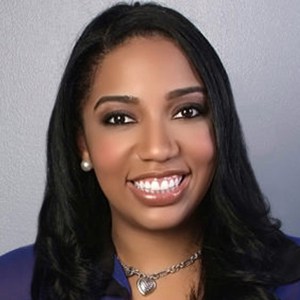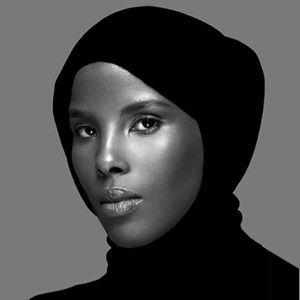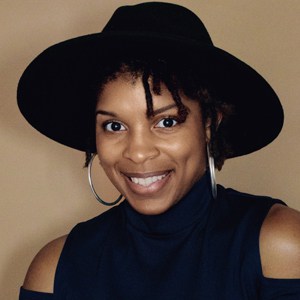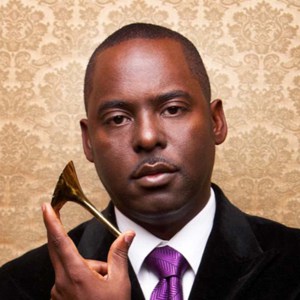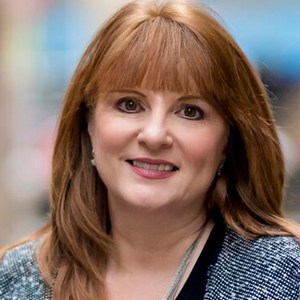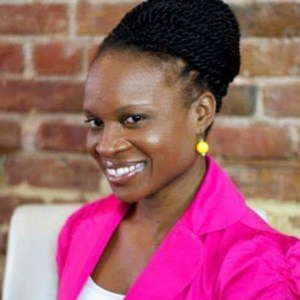Change can be uncomfortable, but working together to combat racism in the fashion industry, will bring more opportunities for people of color to succeed in their careers and businesses. As the panelists of Fashion Mingle’s ‘Diversity in Fashion” Mingle Mastermind session shared their experiences and thoughts, I couldn’t help but see parallels within my own experiences.
“Many of my experiences stem from microaggressions” said cohost of the panel and fashion designer Adrina Fanore. Adrina explained that microaggressions are “any type of action, or statement, or incident that indirectly discriminates against a marginalized group”.
Adrina’s experience with microaggressions have been numerous, and she shared an experience during her time in the corporate fashion industry, where she was working on a project, for which she had done extensive research, and was instrumental in bringing the project into fruition, but was told she was not invited to the presentation because she wasn’t “on brand”. That kind of daily microaggression is prevalent in the fashion industry, and why Fashion Mingle is launching the Diversity in the Fashion Industry series.
Racism in the Fashion Industry Starts with Microaggressions
- Jonathan Valdez, Fashion Journalist and founder of OJ&B blog and podcast.
- Nicole Doswell, Executive Director
- Elliot Carlyle, Business Coach and Director of Cultural Diversity and Inclusion for NYC Jewelry Week
- Eddie Rhodman, Jr, PR & Event Production
- Hamdia Ahmed, Model at TRUE Model Management
- Adrina Nelson, Fashion Designer of Adrina Fanore
- Etu Evans, Celebrity Shoe Designer
- Melissa Shea, CEO of Fashion Mingle
- Marc Harvey, Founder of MHB Cosmetics
- Eldonie Mason, Fashion & Entertainment Attorney
- Wendy Hu, Event Producer for Visual Conductor
Hamdia Ahmed, a former Somali refugee and model at TRUE Model Management shared similar experiences. Brands and agencies would routinely reject her because of her hijab, a veil worn by muslim women as part of their islamic beliefs. At Hamdia’s first magazine feature, the makeup artist used a foundation that was too dark for her skin. Hamdia didn’t check the mirror before continuing with the shoot, when she later looked at the photos she realized that the makeup artist didn’t use a foundation that matched her skin tone. This is a common problem in the fashion industry and is a result of cosmetic brands not providing enough variety in foundation colors to match the variety of skin tones needed for people of color. She said that now, she brings her own makeup and will “tell them exactly what foundation to use”. Isn’t that unreasonable, for a model to bring their own makeup and tell a professional makeup artist how to work with darker complexions?
Etu Evans, a Creative Director of Harlem World Magazine, Celebrity Shoe Designer, Style Correspondent and Founder of the Solesville Foundation leads the conversation into the idea in which he believes “any black designer or professional in the fashion industry are superheroes”. Stating that we’ve had to go through rejection “leap over and tip toe around white privilege”. Black people specifically, as a result of systematic oppression, have become accustomed to the ways in which this American society functions, knowing that it isn’t right but continuing because we value our destination more than the obstacles on our journey. Now that others have spoken out, the gates have been opened for all of us, as people of color, who have shared our similar experiences. Labels and stereotypes have often been used in the entertainment and fashion industry, specifically to put marginalized groups in boxes.
“Labels are an act of microaggression”, says Etu, “doesn’t allow you to look at the content of character or the creation of work, it allows you to see a color first, opposed to a product”. When people are put into boxes and categories of what they should and shouldn’t be, it stunts growth and essentially creativity. People of color bring different views to the table and create some of the most beautiful products, but without room to be individuals these voices are often silenced and used to propose a eurocentric narrative.
Often in the industry, “black and brown models are used to fill a quota”, says Nicole Doswell, Founder of Models of Color Matter and Executive Director of The Riviere Agency. Nicole has extensive experience in the modeling and fashion industry. Nicole goes on in reference to businesses in the industry that reject diversity, she says “ you want black dollars but not in your campaign”. A example of racism in the fashion industry is the use of people of color for trend campaigns instead of being seen as who they are, models representing people that look like them. Hamdia also says that in this industry, businesses, agencies and companies “use black muslim women as a token”.
People of color have been profiled to be a certain character in this business. Muslim women are always used to convey the diversity narrative of being empowering and strong, which is good, but it isn’t all that they are as individuals. People of color are often not seen as an individual, but a representative of the group they “belong” to. Elliot pointed out that “in this time we are realizing the hearts of people who have not been for us” referring to people of color in the current social climate of the United States. It’s true, at this time we are able to see the true colors of those around us and to some it’s surprising, but to many it’s just repetition of history.
As an effect of this long history of racism, people of color have found ways to reach their goals and achievements by taking advantage of all the opportunities that come our way. As a child, my parents prepared me for this unforgiving society by teaching me that there would be people out there who would not respect me as a person because of my skin color. As a result I have been actively using opportunities to disprove negative stereotypes put upon black people and black women across America.
Eldonie Mason , an Entertainment and Fashion Lawyer and founder of her own firm Mason Firm, LLC, opens up about an experience she had in the industry. She came into a firm for training, and was the only person of color in the entire conference room. Mason said that she was one of the main people who answered the questions in the room, and felt the shock of the rest of the attendees, that a black woman was even in attendance. Mason said “I have to represent every person of color who’s not here”, this statement deeply resonated as I’m sure it did with the other black women watching.
Growing up in a school with very few black kids I learned to find opportunities to disprove negative black stereotypes and everyday was like Eldonie’s day in that conference room, I had to represent my people to teach those around me that those stereotypes are often not true.
Elliot stated that “The system isn’t broken, it just doesn’t work in our favor”, so to stop racism in the fashion industry, we need to find ways together and with allies, to change the system into one that is befitting of all people of color. Eddie Rodman Jr., a business and entertainment consultant, Founder of Rhodman Enterprises and Board Member at Black Public Relations Society Los Angeles (BPRSLA), shared stories of how brands dismissed his attempt to diversify their campaigns before launch. He said that they’d initially be in agreement with the proposal, but later decide to go another route, when their plans fell through, they’d call him back. He’s also experienced brands trying to get out of paying clients of color by trying to pay them less and get extra free posts and marketing out of them. Eddie uses his position to ensure that his clients, and all clients of color, are not taken advantage of by these companies.
Jonathan Valdez, the founder of Orange Juice and Biscuits blog and Us Weekly Fashion Police contributor shared how he would go to job interviews for PR positions and feel like “it wasn’t an interview, but an interrogation”. He found that “luxury brands couldn’t see me as someone who could represent their company because I’m hispanic, heavier and gay… always a white woman with blonde hair and blue eyes got the position”. Jonathan has seen pervasive racism in the fashion industry, and often feels that brands and companies don’t truly care. It has become necessary to “do extra work” just to be in the same spaces as his white counterparts.
“As a black person in America, you have to have a real strong sense of self and determination, because you’re going to have to work so much harder”, Eldonie shares. She says “You are going to have to stockpile those credentials to a height where it gets so much that you can not be denied”. There is pressure, as people of color, that we need to constantly be better than everyone around us and build an unattainable resume. Eldonie goes on to say “Not only are you saying we have to be better, but we have to be so much better it’s almost near perfect”. These experiences put a strain on the mental health of people of color in the industry.
Unfortunately in the entertainment and fashion industry it’s normalized to think of mental health last and creativity first, this philosophy is even more taxing for people of color than it is for their white counterparts. “Any black designer or professional in this industry are superheroes, because of the rejection, and how we’ve had to leap over, and tip toe around white privilege”, says Etu. As black people navigate this industry, there are hardships that will go unrecognized by those who do not share these experiences. White privilege is real and has been an obstacle for many people of color to navigate through.
Elliot Carlyle, Life & Business Coach, and Director of Cultural Diversity and Inclusion for NYC Jewelry Week, says that people of color should “do research so you know your value” in order to protect themselves from pay inequality. He explains how in the past he has been naive to believe that people will “do right by him”, but he quickly learned that it wasn’t the case.
Elliot points out that that the conversations we are having are almost insane. “It’s taxing to even engage because you don’t understand why people are not getting this, why are we here?”. The conversations that we are starting to have, to mend the broken bridges between people of color and people of white privilege, are often difficult to understand. The unspoke racism in the fashion industry forces people into stereotypes. Etu says that as a black designer and creative he is often labeled as “a black…”, meaning, he couldn’t just be a designer that is great at what he does. The mere fact of using the word “black” before any mention of a person’s creative endeavor, is, in and of itself, an example of racism in the fashion industry.
These expectations put a strain on people of color and although some fashion and beauty companies may diversify by putting POC in different positions of authority, we are often expected to be a certain type of Hispanic, Asian or Black character. As a result of being boxed in, and finally being “in the room”, Elliot says he was dumbing himself down to make space, so white people would be comfortable with me. He felt that he had to mold himself into something he wasn’t, but in turn, he began to lose who he was as a person. Elliot said that he had to forgive himself for changing who he was to fit the expectations of white people in the fashion industry.
People of color are constantly being told what they should and shouldn’t do, when, and how to do things. This takes away from the beauty of diversity, when our voices are silenced and we are not allowed the creativity to bloom. A people of color, we continue to deal with unfair disadvantages, not only are we often ignored, but we are rejected as well.
Eddie shared a story of going to a fashion show with a client and Blackish actress, Tracee Ellis Ross. They were the only black people in attendance and were placed in the front row. This made other attendees so upset, that efforts were made to try and move them. They were blatantly treated as unwanted and disrespected, simply because people were uncomfortable with three black faces on the front row.
Racism in the fashion industry is at every level, even when planning to attend an event he’s been asked “why do you even want to come?”, and when he gets there it’s, “why are you here?”.
Elliot said that he’s had to learn to be assertive, but that by displaying his passion has led to the assumption that he was an “angry black man”. This is a common narrative attributed to black people when we are assertive, and ask for what we deserve, or speak out. He goes on to say, “That’s not something that feels good to hear as a person, because we feel like we’re misjudged and are completely misunderstood”.
This constant feeling of being misjudged and misunderstood can and has led to silenced voices. As if it isn’t enough to try and keep us out of spaces of opportunity, but we are also supposed to be quiet, so that we don’t offend anyone. Jonathan says “It seems like they enjoy silencing black and brown voices because of our creativity” and that often, racism in the fashion industry actively oppresses black and brown people. It isn’t healthy to be in a business that does not care for the well-being of those within it. Change has been long overdue, but I think that these conversations are a step forward in correcting the errors of the past.
As an event producer, Wendy Hu, the Creative Director of Visual Conductor says that brands that use people of color to show trends or fads should stop being superficial, “stop making it a trend, be real about it”. This superficial diversity is common, but not how brands that are true allies should show diversity. If a brand, agency, or company is not a true ally, which is to say they are anti-racist, Elliot says, “then don’t even bother with trying to diversify the company”.
When a fashion or beauty brand shows diversity in ad campaigns, but not in their leadership, it’s an act of printing dollar signs on the backs of people of color. Consumers are adept at identifying the integrity of a brand and how it reflects society.
Marc Harvey, a professional makeup artist, hair stylist, and President / COO at MHB Cosmetics (Marc Harvey Beauty) & MySkincAir Organics, has experienced a lot of racism in the beauty industry during his career. He recalls working with brands that didn’t feel the need to create beauty products for black people because their numbers didn’t reflect black support. Marc said that a company “can’t say what their demographics are if they don’t have the products to support all diverse groups”. Brands should understand what each demographic needs and add those products to their line. For example, cosmetic companies should produce shades that will work with a wide variety of brown and black skin tones. Apparel companies should include models of color in fashion shows and magazine campaigns.
The most profound words that resonated with me in this discussion were that of Elliot, when he said, “White people are going to have to put themselves in the position of a student because you can not always be the teacher”. In every aspect of our lives, as people of color, Eurocentric views have been pushed upon us, in our history and daily life, now it’s our turn to talk and white people’s turn to listen about the experiences of black and brown people. Like Elliot, I think that all people can agree that we are experts at being people of color, because that’s what we’ve been all of our lives. No one can tell our stories for us, we must tell our stories, so white people can learn.
As people of color, we are aware that this is going to be a learning process for everyone, and a difficult one because of what we’ve been taught and what society needs to unlearn. Education is very important and everyone needs to be open to learning. Marc asks that white people “choose to be informed”, and that all companies and brands need to be ready to endure the challenges of change and the relearning process. Marc says that we all need to “get comfortable being uncomfortable”, as there will be growing pains, but the pain white people will feel can’t be compared to the pain that racism in the fashion industry has caused to people of color.
As allies, white people and people of color alike need to use opportunities to make sure that all people, including people of color, are being justly represented by their brands. Melissa Shea, the CEO and Co-founder of Fashion Mingle, shared her experience as a white woman trying to actively diversify her company, she says that due to the pressures of time, “I tend to reach out to people in my own circle, and struggle with making sure I’m creating a business that’s diverse”. She asks “Is it okay to give people an opportunity because they’re a person of color?”, feeling conflicted that by doing that, she’s using people of color as a token. White people who want to be supportive of diversity are often confused about what is the right or wrong way to be authentically anti-racist.
It’s natural, as people, to gravitate towards others who look like us and share our experiences, which is one of the issues that causes a lack of diversity in all industries. Marc explains that because of this natural gravitation towards work, life and play becoming homogeneous, “it shows what you see in your daily life to the masses”.
This is part of the unlearning and relearning process. That’s why it’s important to, as Nicole said, ”start by recognizing privilege, using it to speak out against injustice, Bring forward the issues… conversations that need to be had… looking internally”. Everything starts small and impacts the larger issue at hand, allowing everyone to learn and listen.
To sum up what she learned from this session on diversity in the fashion industry, Melissa said white people need to “be proactively anti-racist” and she encourages everyone to read this article on how your brand can be an ally for diversity in the fashion industry.
Creating real change will take time and patience. Eliminating racism in the fashion industry starts with conversations and within each individual, which inevitably continues on to those around us, as Nipsey Hussle famously said “The Marathon Continues”.
Fashion Mingle’s Diversity in the Fashion Industry series is held the first Friday of each month. Learn more about Mingle Mastermind Sessions and how to join at www.fashionmingle.net/mastermind.



